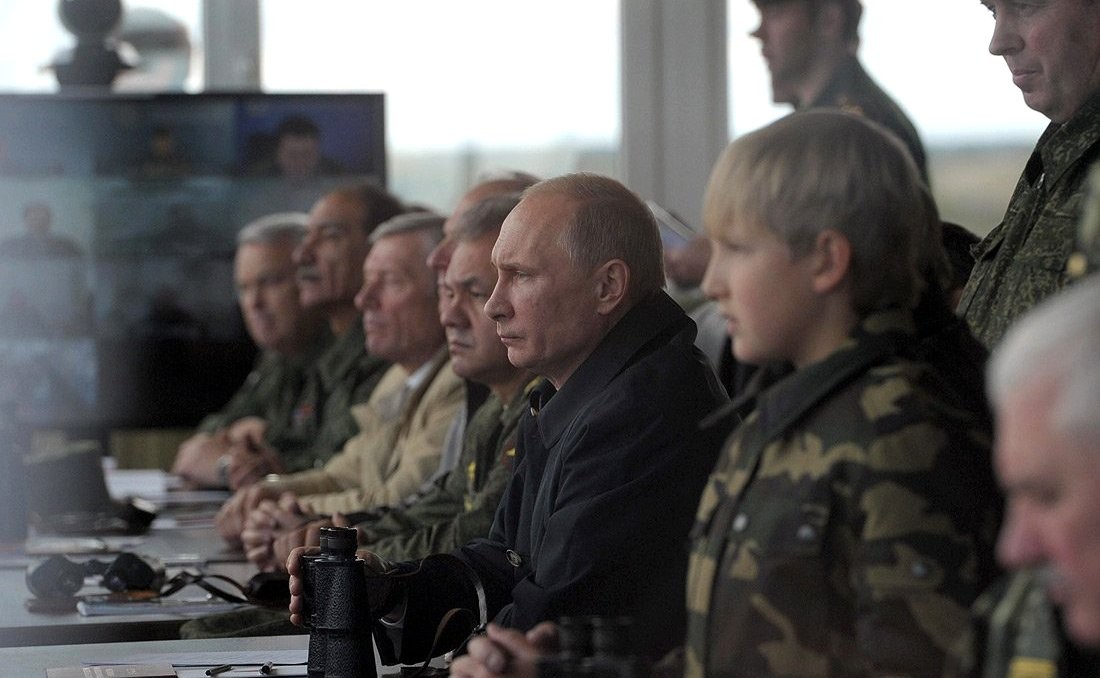Ten things you need to know about Russian military exercises
The official phase of “Zapad-2017”, the biggest Russian-Belarusian military exercise this year, started today (September 14th). Yet, this event has been analysed by security pundits for months. There were many speculations about how this exercise will change the regional dynamics and security situation. The aim of this article is to put “Zapad-2017” into a larger perspective. How do the Russian armed forces train and what is the purpose of those drills? What has changed since the previous “Zapad” exercise which took place in 2013? What is to watch during “Zapad-2017”?
September 14, 2017 -
Dominik P. Jankowski
-
Articles and Commentary

Here are ten things every NEE reader should need to know:
1) Russians train as they fight. This is a crucial element of the Russian exercising posture. In practical terms, this means that the Russian drills are based on a real threat assessment. The scenarios are realistic. They cover the opponents that exist and the military capabilities which match the reality.
2) Since 2013 Russia has been directly engaged in two major conventional military conflicts in the vicinity of NATO. Both in the cases of Ukraine and Syria, Russian forces continue to test their military capabilities, chain of command, procedures and level of interoperability on the battlefield. Those military operations have helped the Russian armed forces gain solid battlefield experience in a conventional conflict. “Zapad-2017” is yet another chance to verify the lessons learnt from both wars and eliminate existing gaps.
3) The Russian operational engagement gives us some initial sense of the elements which might be exercised. Based on the observation of the Russian-Ukrainian conflict one can expect the following components: use of drones or UAVs to exercise constant real-time surveillance, swift targeting by concentrated artillery fire with advanced munition as well as offensive electronic warfare capabilities.
4) “Zapad-2017” is of particular importance for the Russian Western and Southern Military Districts. They have become a top priority in the Russian military modernisation program since at least 2012. In practical terms this means that the units in both districts have received the most modern and technologically-advanced equipment, which will be put to the test in “Zapad-2017”.
5) Another key element of the modernisation of both military districts is the creation of the highly sophisticated Anti-Access/Area Denial systems (A2/AD). They encompass the necessary air power, maritime capabilities (including offensive mining), offensive and defensive missile systems (including Iskander, Bastion, Kalibr and S-400), offensive electronic warfare and cyber capabilities. The militarisation of the Kaliningrad Oblast and Crimea led to the creation of the so-called A2/AD bubbles right on NATO borders. Their main goal is to limit NATO’s freedom of manoeuvring. In “Zapad-2017” one shall expect that those systems will not only be exercised, but in fact (and what is even more important) their level of integration will be verified.
6) The nuclear component is something of particular importance to watch during “Zapad-2017”. Russia often merges the conventional and nuclear dimensions into one scenario. In fact, such an approach allows Russia to test its escalation dominance in a potential conflict. This is exactly what NATO does not do as such a policy fuels unpredictability and enhances a lack of confidence. In a broader context, the Russian approach also aims at intimidating European societies.
7) Since 2013 Russia has significantly changed its combined exercising posture. The “whole of nation” approach to drills was reintroduced. In reality it means that the whole public administration – on both national and regional levels – prepares for a large-scale conflict. The non-military units and agencies train simultaneously with the Russian armed forces. The “whole of nation” approach helps to integrate the military and non-military systems and enhances their interoperability.
8) Russia also reinstated the practice of organising the so-called snap exercises. Those drills come with no prior notification and are predominantly large in scale. They often happen in NATO’s direct vicinity. They are very hard to trace and could potentially serve as a preparation to the start of a military conflict. There is no doubt that snap exercises confirm Russia’s strategic political and military unpredictability as they increase the level of uncertainty and the risk of miscalculation.
9) Russia’s exercising policy can also be characterised by a lack of transparency. Russia often does not give advanced notice of its exercises which is a standard procedure in the Organization for Security and Co-operation in Europe (OSCE). Russia repeatedly splits its large scale exercises, as in the case of “Zapad-2017”, into smaller ones. This tactics allows it to avoid the necessity of notification and invitation of foreign observers. In fact the Russian armed forces often act contrary to the spirit of the OSCE instruments and use the existing “loopholes”, especially in the Vienna Document.
10) At the same time, Russia uses exercises like “Zapad-2017” to verify the effectiveness of its propaganda machinery. In the media sphere Russia often artificially boosts the number of troops and equipment that will take part in the exercise in order to test the reaction of NATO allies, neighbouring states (especially Ukraine, Georgia, Sweden and Finland) and European societies. In fact, in the case of the “Zapad-2017” Russia wanted to create an impression that this exercise is the only game in town. In fact, it is not. Other operations – including the Russian military engagement in Ukraine and Syria, the Russian hybrid activities in Western and Central Europe or in the Western Balkans – continue.
Dominik P. Jankowski is head of the OSCE and Eastern Security Unit at the Polish Ministry of Foreign Affairs.
All opinions are those of the author and do not necessarily represent the position or views of the institution he represents.

































